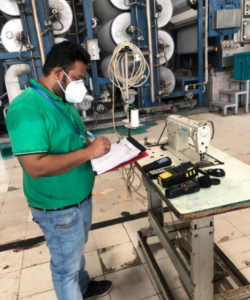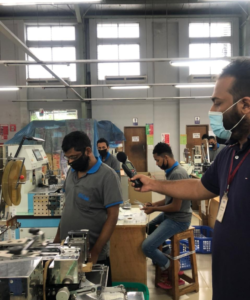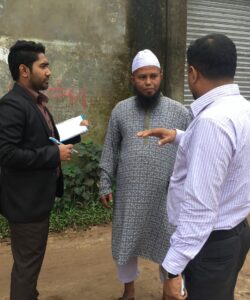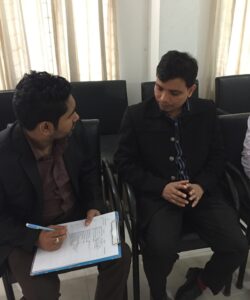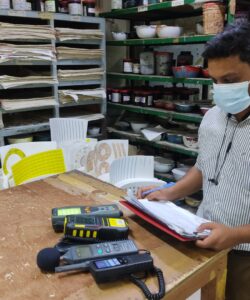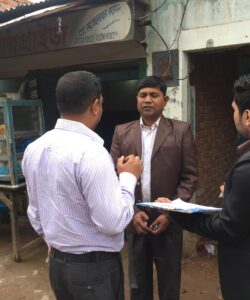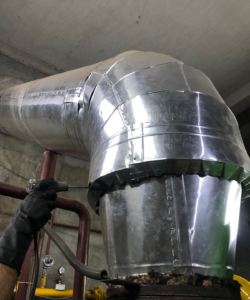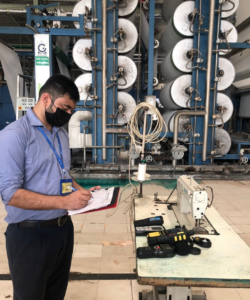We are working as an Environmental Consultancy Firm ISO 9001-2015 certified in the field of Environmental Inspection with the highest number of Environmental Inspection Scopes in Bangladesh.
WHAT WE DO
Environmental Consultancy
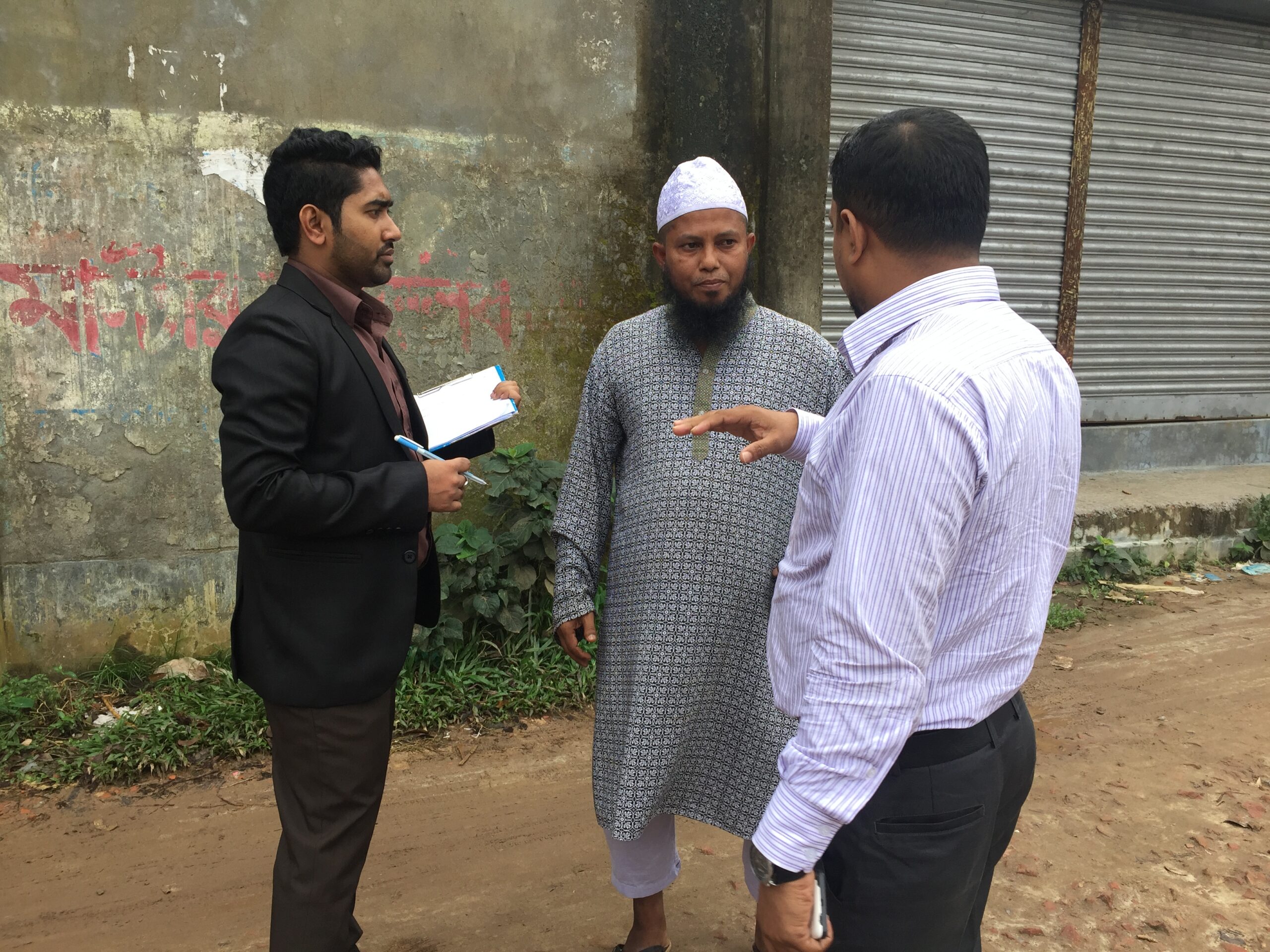
Environmental Impact Assessment
Environmental Impact Assessment (EIA) is a process of evaluating the likely environmental impacts of a proposed project or development, taking into account inter-related socio-economic, cultural and human-health impacts, both beneficial and adverse.
Environmental Impact Assessment (EIA) as a tool used to identify the environmental, social and economic impacts of a project prior to decision-making. It aims to predict environmental impacts at an early stage in project planning and design, find ways and means to reduce adverse impacts, shape projects to suit the local environment and present the predictions and options to decision-makers. By using EIA both environmental and economic benefits can be achieved, such as reduced cost and time of project implementation and design, avoided treatment/clean-up costs and impacts of laws and regulations.
Green Tech is here to assess your companies Environmental Impact so that you can know that whether your activities are environmental familiar as well as you can ensure your customer about your stand regarding environmental commitments and sustainability.
0
EIA Projects0
RMG0
Pharmaceuticals0
Automobile0
Power Plant0
Electronics & Chemical Industry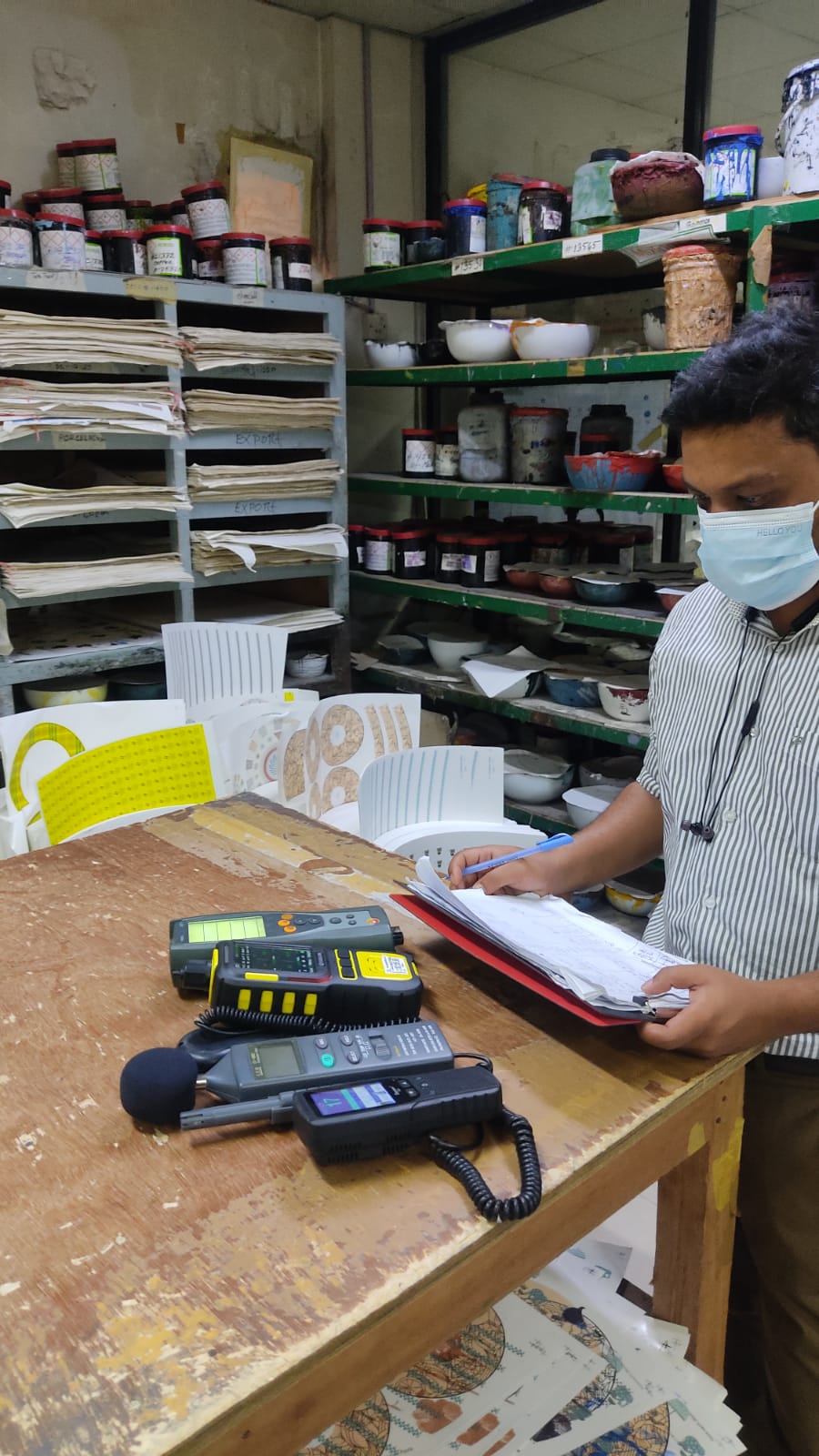
Environmental Management Plan (EMP)
An Environmental Management Plan (EMP) can be defined as “an environmental management tool used to ensure that undue or reasonably avoidable adverse impacts of the construction, operation and decommissioning of a project are prevented; and that the positive benefits of the projects are enhanced”. EMPs are therefore important tools for ensuring that the management actions arising from Environmental Impact Assessment (EIA) processes are clearly defined and implemented through all phases of the project life-cycle.
Environmental management plans describe how an action might impact on the natural environment in which it occurs and set out clear commitments from the person taking the action on how those impacts will be avoided, minimized and managed so that they are environmentally acceptable.
An EMS follows a Plan-Do-Check-Act, or PDCA, Cycle. The diagram shows the process of first developing an environmental policy, planning the EMS, and then implementing it. The process also includes checking the system and acting on it. The model is continuous because an EMS is a process of continual improvement in which an organization is constantly reviewing and revising the system.
0
EMS Projects0
RMG0
Washing Plant0
Composite Knit Factory0
Power Plant0
Chemical Industry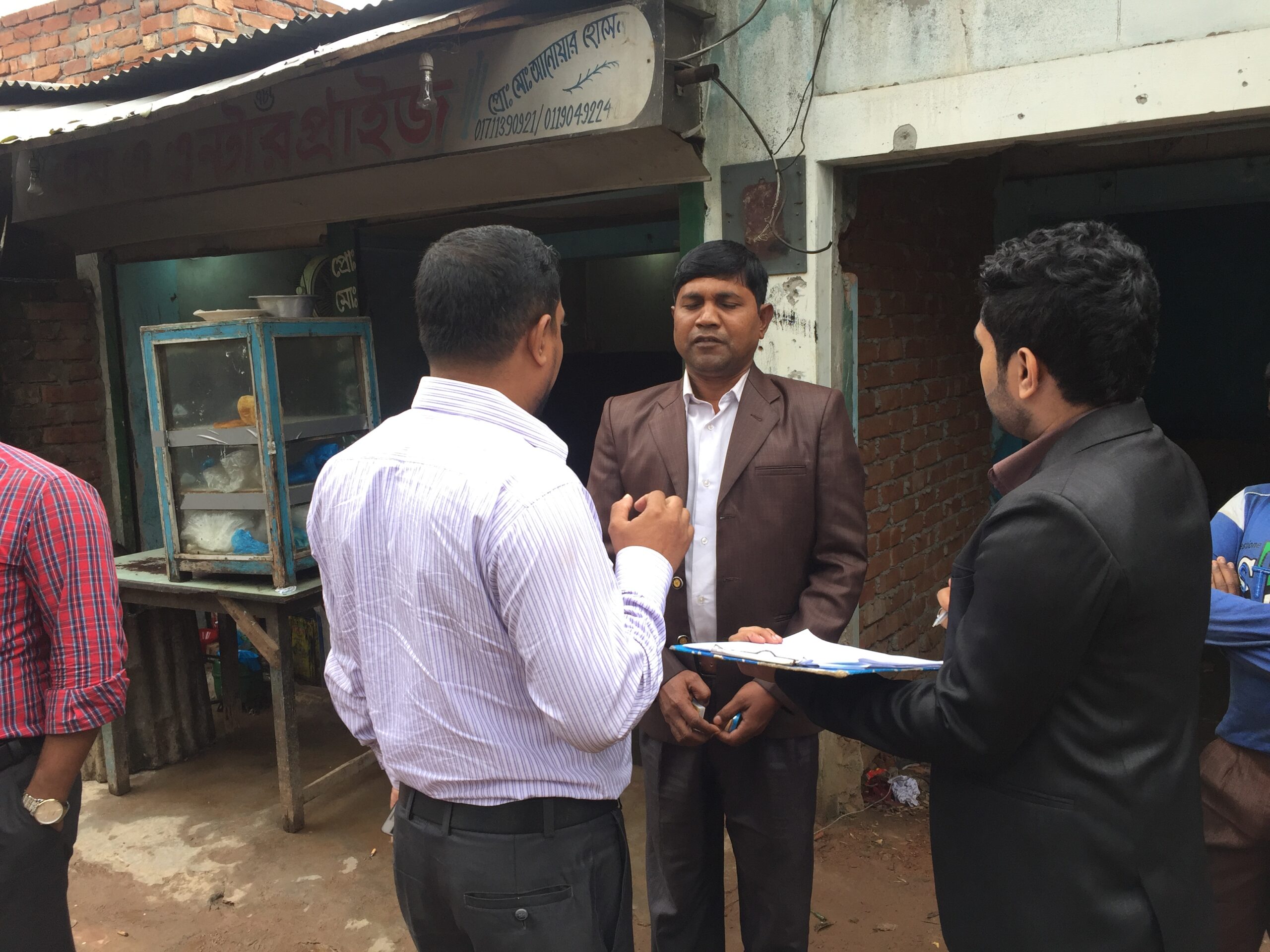
Environmental Management System (EMS)
An Environmental Management System (EMS) is a framework that helps a company achieve its environmental goals through consistent control of its operations. The assumption is that this increased control will improve the environmental performance of the company. The EMS itself does not dictate a level of environmental performance that must be achieved; each company’s EMS is tailored to the company’s business and goals.
An EMS helps a company address its regulatory demands in a systematic and cost-effective manner. This proactive approach can help reduce the risk of non-compliance and improve health and safety practices for employees and the public.An EMS can also help address non-regulated issues, such as energy conservation, and can promote stronger operational control and employee stewardship.
The primary objective of the environmental management and monitoring is to recordenvironmental impacts resulting from the project activities and to ensure implementation of the “mitigation measures” identified earlier in order to reduce adverse impacts and enhance positive impacts from specific project activities. Besides, it would also address any unexpected or unforeseen environmental impacts that may arise during construction and operation phases of the project.
0
EMP Projects0
RMG0
Washing Plant0
Composite Knit Factory0
Shoe/Leather/Electronics0
E-commerce
Environmental Health and Safety (EHS) Management
Environmental Health and safety (EHS) management refers to a cyclical business process for systematically achieving a desired level of EHS performance. EHS management systems involve planning and implementing the necessary systems, programs and procedures to achieve that level of performance, checking the results and making adjustments, as necessary, to ensure that the desired level of performance is being achieved. It may also be desirable to achieve external certification to an acknowledged management system standard (such as ISO 14001 for example) to provide external verification that the building blocks of an accepted management system are in place.
Initial Environmental Examination (IEE)
Projects in which the requirement for an EIA needs to be ascertained, should be subjected to an Initial Environmental Examination (IEE). IEE is carried out to determine whether potentially adverse environmental effects are significant or whether mitigation measures can be adopted to reduce or eliminate these adverse effects. IEErequires more in-depth analysis than applied in the screening procedure. Consequently, an IEE involves more time and resources.
IEE also requires expert advice and technical input from environmental specialists so that potential environmental problems can be clearly defined. When an IEE is able to provide a definite solution to environmental problems, an EIA is not necessary.
Environmental & Social Impact Assessment (ESIA)
Green Tech Environmental Company is a pioneer organization in Bangladesh to prepare Environmental & Social Impact Assessment (ESIA) for different sectors. Green Tech Environmental Company has prepared more than 15ESIA reports since the last 05 year’s period for Bangladesh Bank, IFC, World Bank.
Existing Baseline Studies
Baseline data on environment is important to understand existing physical, biological, cultural, economic and social environmental characteristics. This information serves as the basis for identification, prediction and evaluation of impacts of the project activities. Mainly there are two principal objectives in examining and defining the existing environment:
- To recognize potential environmental impacts of the project and enable mitigation measures to be identified.
- To provide a base line against which environmental conditions in the future project may be measured and to document conditions which were either existing or developing before the introduction of the project and not due to the project.
The baseline environmental quality is assessed through field studies within the impact zone for various components of the environment, viz. air, noise, water, and land and socio-economic. Primary and Secondary data are generated and collected for conducting Baseline Study:
- Existing Land Use pattern is studied to identify any ecologically/historically critical area is available surrounding the proposed project.
- Meteorological data of the site is collected from Bangladesh Meteorological Department (BMD)
- Hydrological and morphological data is collected from BWDB and BIWTA; Primary and Secondary Socio-economic data is collected using Census data/Government Sources.
- Collection of Environmental quality data including soil investigation, air quality, water quality, noise level etc. for the selected site:
Green Tech Environmental Company team collects sample from the site and assesses the air and noise quality, surface & ground water quality, soil characteristics of the project area in their own laboratory.
In short, Green Tech Environmental Company analyzes the environmental and social baseline condition of a project in respect of water resources, air quality, noise level, land resources including land use/land cover, agriculture, fisheries, ecosystems and socio-economic condition.
Prediction of Impacts & Modeling:
- Identification of potential impacts due to the project location, construction and operation of the project is done using Checklist. Checklists are comprehensive lists of environmental effects and impacts indicator designed to stimulate the analysis to think broadly about possible consequences of contemplated actions. In this checklist major activities which create the Significant Environmental Impacts (SEIs) are shown. The terms none, minor, moderate and major are used in checklists to classify the magnitude of SEIs. In case of suggesting mitigation measures the comparison tool has been given priority.
- Green Tech Environmental Company out air quality & noise Modeling
- Conducting advanced air emission dispersion modeling for determining the ground concentration of pollutants
- Noise modeling simulation by using noise modeling software
“Public Consultation” (Stakeholder Consultation):
Public involvement is a fundamental principle of the ESIA process. Specifically, public involvement is a valuable source of information on key impacts, potential mitigation measures and the identification and selection of alternatives. It also ensures the ESIA process is open and transparent.
The public has various rights: right to access to information, right to contribute to information and right to challenge decisions.
Therefore, communication between the assessment team and the public is the key to public participation.
Green Tech Environmental Company arranges “Public Consultation” meetings for conducting ESIA.
